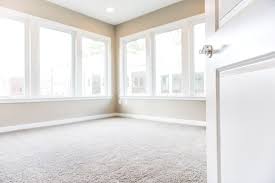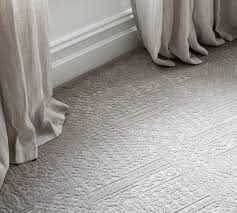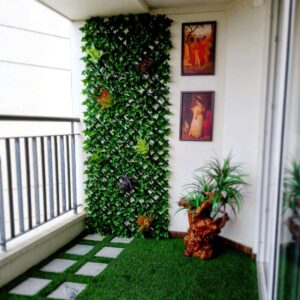Wall to wall carpets are a popular flooring solution that offers a unique blend of comfort, style, and functionality. As the name suggests, these carpets cover the entire floor area, from one wall to the other, creating a seamless, cohesive look in any room. This type of flooring has been a mainstay in homes and commercial spaces for decades, providing both aesthetic appeal and practical benefits. In this article, we will explore the various aspects of wall to wall carpets, from their benefits to the installation process and maintenance tips.
What Are Wall to Wall Carpets?
Wall to wall carpets are large, continuous pieces of carpet that cover an entire floor surface. Unlike area rugs or smaller mats, wall to wall carpets are installed to fit the dimensions of the room, creating a complete coverage of the floor. These carpets are typically made from a variety of materials, including wool, nylon, polyester, and polypropylene, each offering distinct advantages depending on the space’s needs.
The most significant feature of wall to wall carpets is their ability to transform a space. Whether it’s a living room, bedroom, office, or hotel lobby, wall to wall carpets can add warmth, texture, and style. They are often custom-fitted to the room, ensuring a perfect match and complete coverage without gaps or seams.

Benefits of Wall to Wall Carpets
1. Comfort and Warmth Wall to wall carpets are well-known for their ability to provide comfort underfoot. The soft, plush surface makes walking on them a pleasant experience, offering a cushioning effect that is especially beneficial in bedrooms or living rooms where people often sit or lie on the floor. Additionally, carpets help in maintaining warmth in a room by providing insulation. This is particularly useful in colder climates where the carpet acts as an insulator, trapping heat and preventing it from escaping through the floor.
2. Aesthetic Appeal One of the most significant advantages of wall to wall carpets is their ability to enhance the overall aesthetics of a room. With various colors, patterns, and textures available, wall to wall carpets can complement any interior design style. Whether you prefer a modern, minimalist look or a traditional, cozy ambiance, there’s a wall to wall carpet option that can match your vision.
3. Noise Reduction Wall to wall carpets are excellent for reducing noise levels in a room. The carpet fibers absorb sound, making them an ideal choice for spaces where noise control is essential. In homes, wall to wall carpets can help dampen the sound of footsteps, conversations, and other activities, creating a quieter, more peaceful environment. This is particularly beneficial in apartments or multi-story buildings where noise can travel between floors.
4. Safety Features Another notable benefit of wall to wall carpets is their safety features. Carpets provide a non-slip surface, reducing the likelihood of slips and falls. This is particularly important in homes with young children or elderly individuals who may be more prone to accidents. The soft texture of wall to wall carpets also reduces the impact of a fall, minimizing the risk of injury.
5. Versatility Wall to wall carpets come in a wide range of designs, from solid colors to intricate patterns and textures. This versatility makes them suitable for various types of rooms, from bedrooms and living areas to offices and commercial spaces. You can choose carpets that reflect your style and taste, whether you want a luxurious, high-pile option or a more practical, low-maintenance carpet.
Types of Wall to Wall Carpets
There are several types of wall to wall carpets, each offering different textures and performance features. The most common types include:
1. Cut Pile Carpets Cut pile carpets are created by cutting the loops of yarn that are sewn into the carpet backing. This results in a soft, luxurious texture that is comfortable to walk on. Cut pile carpets can be further categorized into plush, Saxony, and frieze styles, each offering a different look and feel. Plush cut pile carpets are smooth and elegant, while frieze carpets have a more casual, twisted look.
2. Loop Pile Carpets Loop pile carpets are made by leaving the yarn loops intact, which creates a durable and textured surface. These carpets are ideal for high-traffic areas, as they are less prone to wear and tear. They are also easier to clean compared to cut pile carpets, making them a popular choice for commercial spaces or busy households.
3. Berber Carpets Berber carpets are a type of loop pile carpet that is typically made from wool or synthetic fibers. They are known for their unique patterns, often featuring small, textured loops of yarn. Berber carpets are highly durable and resistant to stains, making them an excellent choice for areas with heavy foot traffic.
4. Shag Carpets Shag carpets have long, fluffy fibers that give them a distinct, textured look. These carpets are typically made from synthetic fibers and are known for their deep, plush feel. While shag carpets can add a luxurious touch to a room, they require more maintenance and cleaning to keep them looking their best.
5. Synthetic Fiber Carpets Carpets made from synthetic fibers, such as nylon, polyester, and polypropylene, are popular due to their affordability and ease of maintenance. Synthetic fiber carpets are stain-resistant, durable, and available in a wide range of colors and patterns, making them a practical choice for budget-conscious homeowners.
Installation of Wall to Wall Carpets
Installing wall to wall carpets requires careful planning and precision to ensure that the carpet fits the room perfectly and looks seamless. Here are the general steps involved in the installation process:
1. Measuring the Room The first step in the installation process is measuring the dimensions of the room. This is crucial to ensure that you order enough carpet material to cover the entire floor. Accurate measurements also help avoid mistakes during installation.
2. Preparing the Subfloor Before installing the carpet, the subfloor must be cleaned and leveled to ensure a smooth, stable surface. Any debris, dust, or bumps should be removed, as they can affect the carpet’s appearance and longevity.
3. Laying the Carpet Padding Carpet padding is placed beneath the carpet to provide cushioning and increase comfort. It also helps extend the life of the carpet by absorbing pressure and wear. The padding is typically secured with adhesive or staples.
4. Cutting and Fitting the Carpet Once the padding is in place, the carpet is cut to fit the room’s dimensions. This is done carefully to ensure that the carpet covers the floor without gaps or seams. The edges are often tucked into the baseboards for a clean finish.
5. Securing the Carpet The carpet is then secured using adhesive or tack strips around the perimeter of the room. This ensures that the carpet stays in place and does not shift over time.
6. Final Touches Once the carpet is installed, the final touches include trimming the edges, cleaning up any excess material, and ensuring that the carpet is properly stretched to avoid wrinkles or lumps.
Maintenance of Wall to Wall Carpets
Proper maintenance is essential to keep your wall to wall carpets looking their best and extending their lifespan. Here are some tips for maintaining your carpet:
1. Regular Vacuuming Regular vacuuming is crucial for removing dirt, dust, and debris from your carpet. This helps maintain its appearance and prevents dirt from becoming embedded in the fibers. Be sure to vacuum high-traffic areas more frequently.
2. Professional Cleaning While regular vacuuming helps maintain your carpet, it’s also important to have your wall to wall carpets professionally cleaned every 12 to 18 months. Professional cleaning removes deep-set dirt and stains, keeping your carpet fresh and hygienic.
3. Prompt Stain Removal If you spill something on your carpet, it’s important to clean it up immediately to prevent stains from setting. Use a clean cloth to blot the stain and apply a mild carpet cleaner if necessary. Avoid scrubbing, as this can damage the carpet fibers.
4. Protecting High-Traffic Areas To minimize wear and tear, consider placing rugs or mats in high-traffic areas, such as entryways and hallways. This helps protect the carpet from excessive foot traffic and keeps it looking new for longer.
read more:
- The Beauty of Patterned Wall to Wall Carpet in Home Interiors
- The Best Wall to Wall Carpets in Dubai for Your Home
- How to Choose the Perfect Wall to Wall Carpet Flooring for Any Room
Conclusion
Wall to wall carpets offer a wide range of benefits, from comfort and aesthetic appeal to noise reduction and safety features. They are available in various materials and styles, making it easy to find an option that suits your needs and tastes. With proper installation and maintenance, wall to wall carpets can enhance the beauty and functionality of any room, creating a warm, inviting atmosphere in both residential and commercial spaces. Whether you’re renovating your home or outfitting a new office, wall to wall carpets are a smart choice that provides long-lasting value and style.









